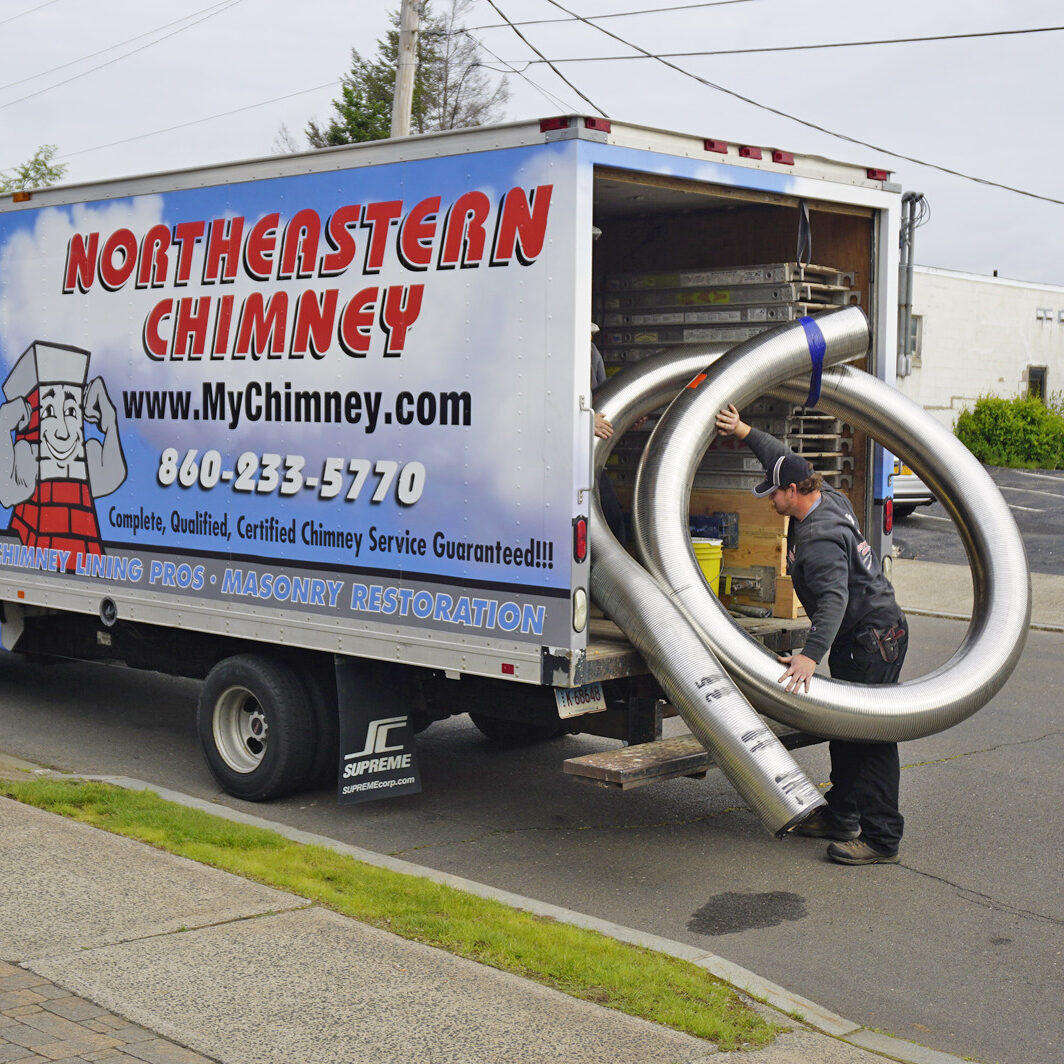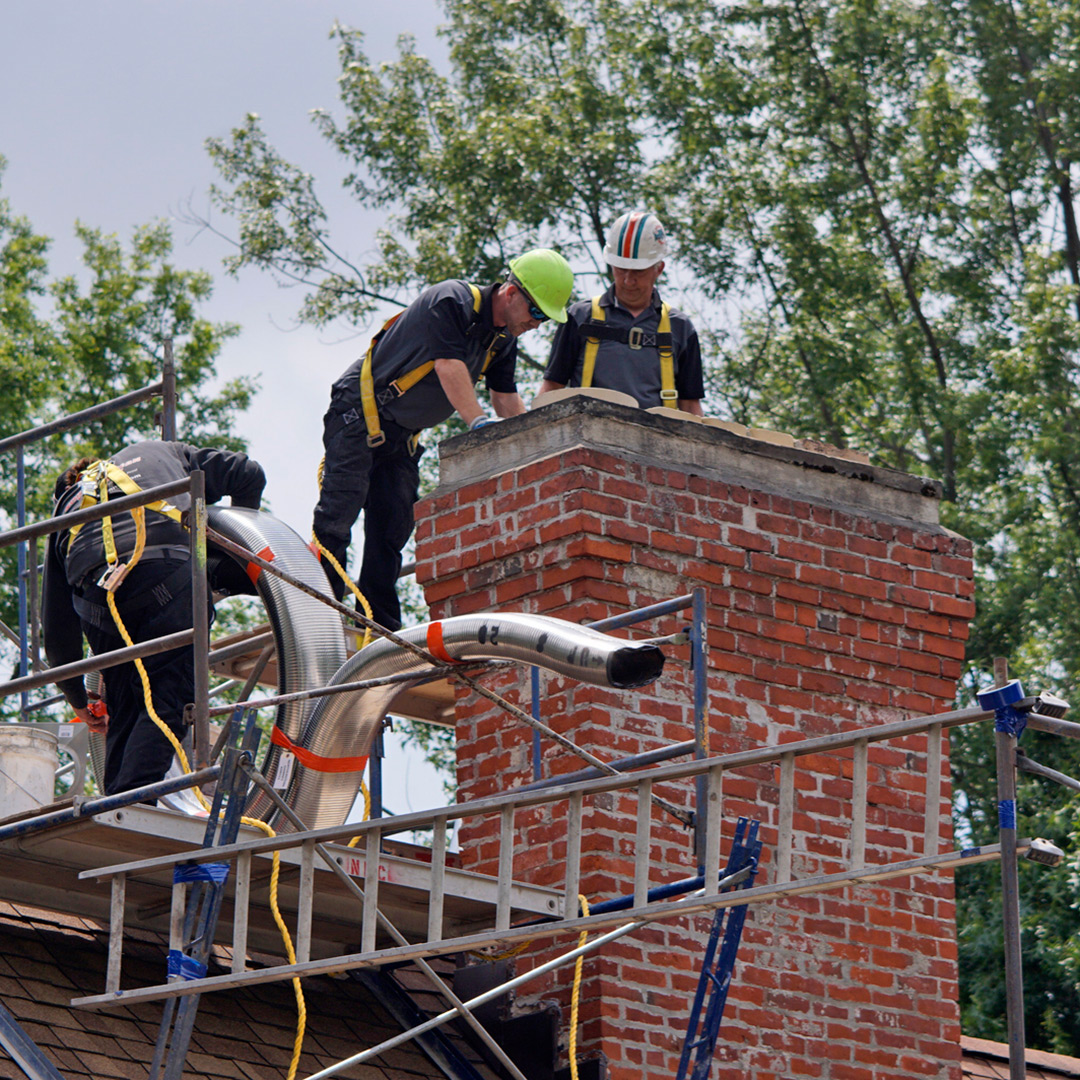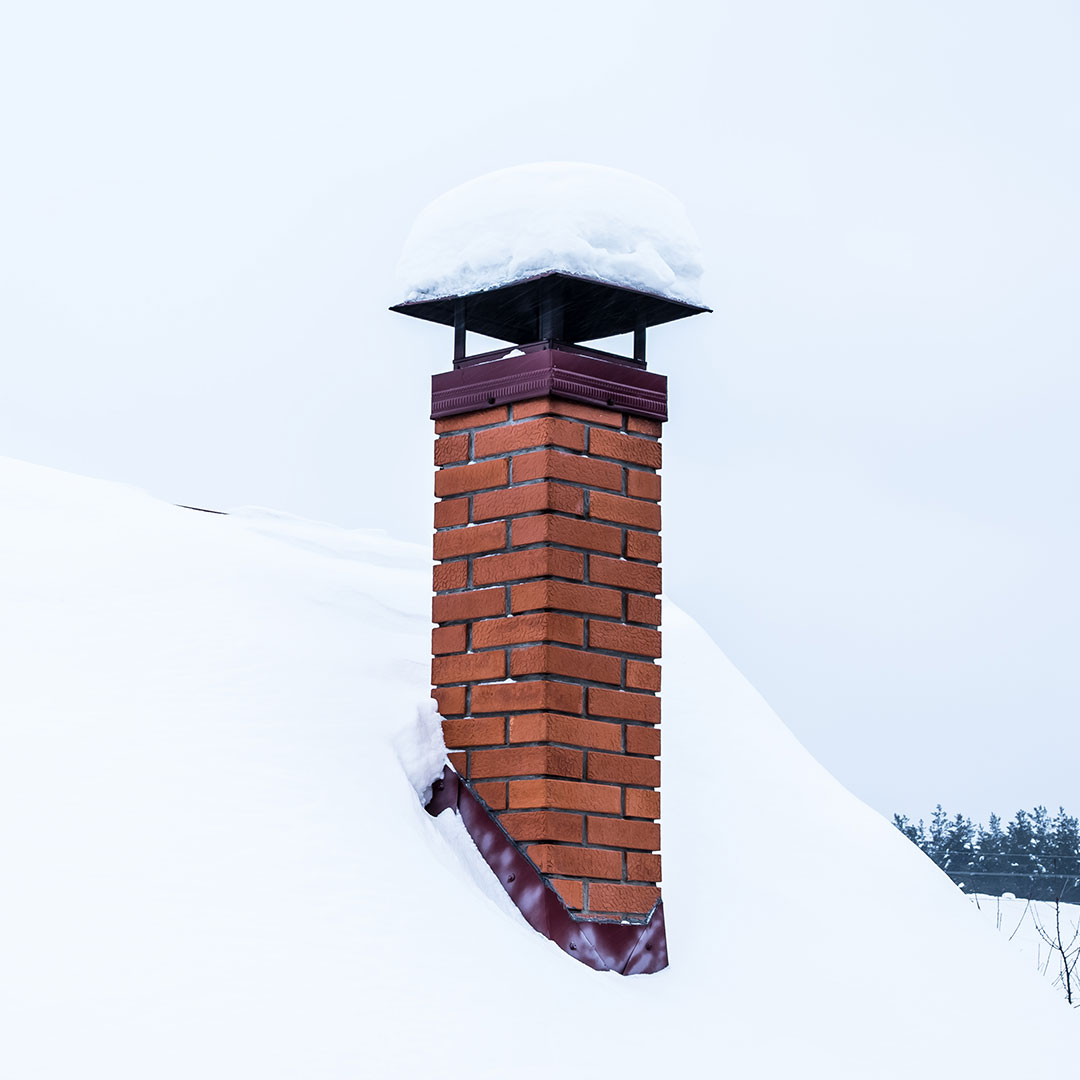Protecting The Chimney Flue

Animals are on the hunt for a cozy home for the winter, it’s time to schedule your chimney cap replacement! And no, we don’t mean your Thanksgiving turkey roasting over the fire! The main component of a chimney that often goes overlooked is the chimney cap. The chimney cap plays a vital role in protecting your home’s flue and preventing unwanted problems such as water damage and animal infestations. Take a peek up at the very top of your chimney. Is there a metal cap above the hole that connects to the flue? Is that metal cap rusted or in bad condition? Let’s check it out!
Signs You Need a Chimney Cap Replacement
In our previous blogs, we often mention chimneys are great homes for animals. As Chicagoland enters the winter season, animals will be looking for a protected space away from the wind, snow and rain. Chimneys are warm and give the animals a seemingly protected home in the winter months. Yet, having these animals in your chimney during the winter is dangerous. When you light the chimney, the animals inside are exposed to open flames and smoke. It can cause serious issues, especially with chimney fires. Knowing when to replace your chimney cap can help prevent this damage to your chimney system. For example, if there are holes in the chimney cap or no chimney cap, an animal may be inside! Here’s what to check your chimney for:
- Visible Damage: Inspect your chimney cap for any visible signs of damage, such as cracks, rust, holes or missing pieces. Signs of nest materials, animal sounds and odor might indicate an animal living inside!
- Water Leaks: If you notice water leaks or stains inside your home near your chimney, it could be a sign that your chimney cap is no longer providing adequate protection against water leakage.
- Unusual Chimney Drafts: A damaged or poorly fitted chimney cap can disrupt the airflow in your chimney, resulting in cold drafts or backdrafts. This can lead to poor combustion, inefficient heating, and even carbon monoxide buildup.
The Process of Chimney Cap Replacement
A chimney cap replacement starts with contacting a certified chimney professional. Here’s what Superior Chimney professionals can do for you:
- Assessment: We will start by assessing the current state of your chimney cap and identifying any underlying issues that need to be addressed. This may involve inspecting the condition of the chimney flue, checking for animal nests, or evaluating the structural integrity of the chimney.
- Choosing the Right Chimney Cap: Selecting the appropriate chimney cap replacement is important. Together, we will consider factors such as the type of fuel you burn, appearance you want. Consult with a chimney professional to help you choose the best fit for your specific needs.
- Measuring and Installation: Once you have chosen the chimney cap replacement, we will accurately measure the dimensions of your flue to ensure a snug fit.
- Regular Maintenance: After the chimney cap replacement, make it a habit to inspect and clean the cap regularly. Remove any debris or buildup that may accumulate over time, as this can affect the cap’s performance.
Need Help Protecting the Chimney Flue?
Ensure your chimney cap is in good condition, you protect your home from water damage, animal infestations, and fire hazards. An annual chimney inspection and prompt chimney cap replacement will keep your chimney and flue functioning for years to come. Consult with a Superior Chimney Professional at 877-244-6349 for expert advice and assistance in choosing and installing the right chimney cap for your Chimney.
This post first appeared on https://www.superiorchimney.net

 Problems of a Non-Insulated Chimney
Problems of a Non-Insulated Chimney

 What is chimney waterproofing?
What is chimney waterproofing? “A stitch in time saves nine”
“A stitch in time saves nine” Freeze-Thaw Cycle
Freeze-Thaw Cycle



